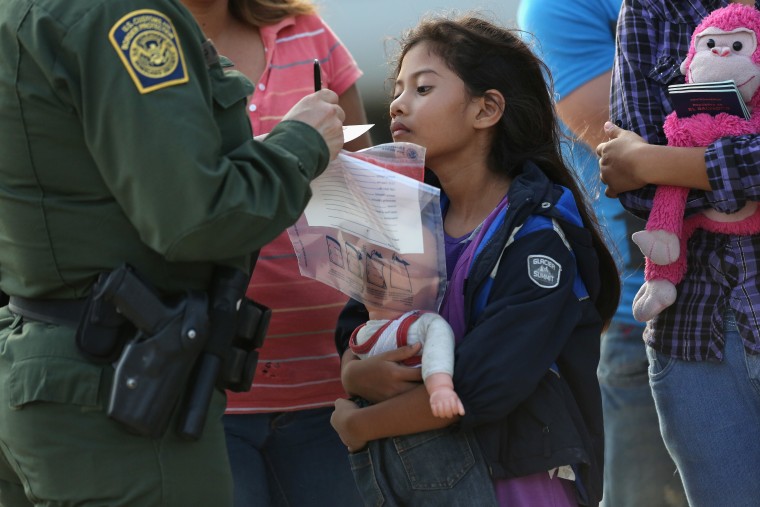Presidents of three countries in Central America have come to Washington to meet with President Barack Obama about stemming the exodus of their children to the U.S border. The administration has been trying to speed up the return of families and children, but a proposal to change a 2008 law that grants unaccompanied children opportunities to apply to stay in the U.S. has run into problems with Democrats.
An idea on the table at the President's meeting is to allow children to apply for U.S. refugee status from their own country. Here is more detail on that idea:
Why are the presidents meeting?
Since about 2011, the numbers of children arriving at the U.S. border unaccompanied from Central America has been multiplying. The number escalated even more this year, jumping from about 24,000 for fiscal year 2013, to more than 57,000 from October through June. That number includes Mexican children who generally are quickly returned to their country. Many are making the journey with the help of smugglers. The administration and presidents want to stop children and families from making the perilous journey to the border.
Is there a plan to treat the children as refugees?
The administration is considering, among other proposals, creating a small pilot “in-country processing” program in Honduras. Children in Honduras would go through a process to determine whether they are eligible to legally enter the U.S., essentially granting them refugee status or other forms of relief such as a “U” visa for serious crime victims or “T” visa for trafficking victims. Usually refugee processing is done after people have left their country and gone to a third country, but the president can authorize for some people to be processed in their own country. The in-country processing could dissuade people from putting children in the hands of smugglers and help the U.S. control the flood of arrivals.
Aren't they already refugees when they arrive at the border?
Although many advocates consider the children and the families to be refugees from violence and poverty in Honduras, Guatemala and El Salvador, they legally are not considered refugees. However the U.S. recognizes that some children do have legitimate fears of violence, abuse or exploitation if returned to their country. Once they cross the U.S. border, they are screened to determine whether they have “credible fear” of persecution and can go forward and apply for asylum or other relief if eligible. While U.S. law allows authorities to quickly return Mexican children to their country unless they show "credible fear," it requires that children from non-contiguous countries be transferred to shelters and eventually released to parents or responsible adults while they await hearings on their claims or for deportation.
Has in-country processing been done before?
In-country processing was used for refugees in East Asia during and after the Vietnam War, for Haitian refugees in the 1990s and in the former Soviet Union. The Center for American Progress, a liberal think tank which is closely aligned with the administration, recommended a similar process for the Central American refugees.
How many children have valid refugee claims?
An exact number is unknown. However, a United Nations report found that at least 58 percent of 404 children interviewed _ from Mexico and Central America _ had suffered or faced harms that indicated need for international protections. A legal services group that met with children held in a shelter in San Antonio and conducted screenings found about 583 would qualify for some other relief. For many children, the outcome of claims depends on whether they have a lawyer, articulate their victimization or are aware they can request protection.
How much would this cost?
The administration has not released information publicly on the cost of the program. The New York Times reported Friday that over two years, the cost of dealing with 5,000 applicants and accepting applications of 1,750 people would cost about $47 million.
